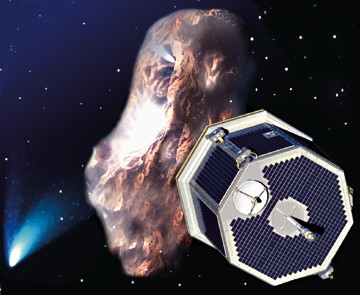NASA's comet tour challenges teachers and students to enter contest
By David Brand
NASA's Contour space mission and Cornell University are challenging students and their teachers in the United States to participate in the spacecraft's forthcoming exploration of comets.
They are being invited to participate in the Cornell and Contour Comet Challenge, with the grand prize for the winners a trip to Kennedy Space Center at Cape Canaveral Spaceport, Florida, to witness the launch of the spacecraft scheduled for July 1. The NASA mission, of̃cially the Comet Nucleus Tour, is being managed by the Applied Physics Laboratory at the Johns Hopkins University, with Cornell's Department of Astronomy leading the international science team.
As part of Cornell's educational outreach for the mission, students and their teachers are being challenged to devise a program to educate and involve their communities about Contour's goal to study at least two comets as they travel through the inner solar system. The spacecraft will provide the closest look ever at a comet's nucleus.
The teams submitting the two winning programs – one in grades 5 through 8 and one in grades 9 through 12 – will be invited to attend four days of launch-related activities, including interviews with mission scientists and engineers, at Kennedy Space Center. Each team will be allowed a budget of up to $1,000 for its educational program. The winning teams, each consisting of a teacher and a student, will be chosen by a panel of educators and scientists on the basis of the originality and feasibility of the submitted plans.
Students don't need a lot of background knowledge either on Contour or about comets to participate in the program, explains Laura Lautz, the mission's education and public outreach coordinator at Cornell. "The key is, they need to be curious," she says. Beyond that, the teachers and students can develop any kind of presentation they choose: a program in conjunction with a local museum, a web-based program or even a video. Students will be encouraged to speak in public and to write articles for local or student newspapers. As well as the two winning teams, two teams from each state will be chosen to receive a kit of Contour materials so that they can follow through with their plans to share the mission's comet exploration with their communities. These teams also will be able to watch the launch on their computers via Web streaming, and to ask questions of mission scientists following the launch.
Media Contact
Get Cornell news delivered right to your inbox.
Subscribe